June Sewage Pollution in South West England
There has been some rain today, and here is how South West Water's WaterFit Live map of sewage pollution looks in late afternoon: [Update - June 12th] Yesterday was warm…
There has been some rain today, and here is how South West Water's WaterFit Live map of sewage pollution looks in late afternoon: [Update - June 12th] Yesterday was warm…
May 1st has been and gone, and the Environment Agency's models are up and running. They are currently advising against bathing at numerous beaches around the coast of Devon and…
Following a long dry spell the Met Office have issued a yellow warning for heavy rain across Devon and Cornwall this afternoon: The first few of what is likely to…
The "Merchants of Doubt" in my title for today refers to a book of that name written by Erik M. Conway and Naomi Oreskes. Here's a trailer for the film…
After a long dry spell the heavens have opened over South West England once again. Here is this evening’s WaterFit Live map from South West Water:
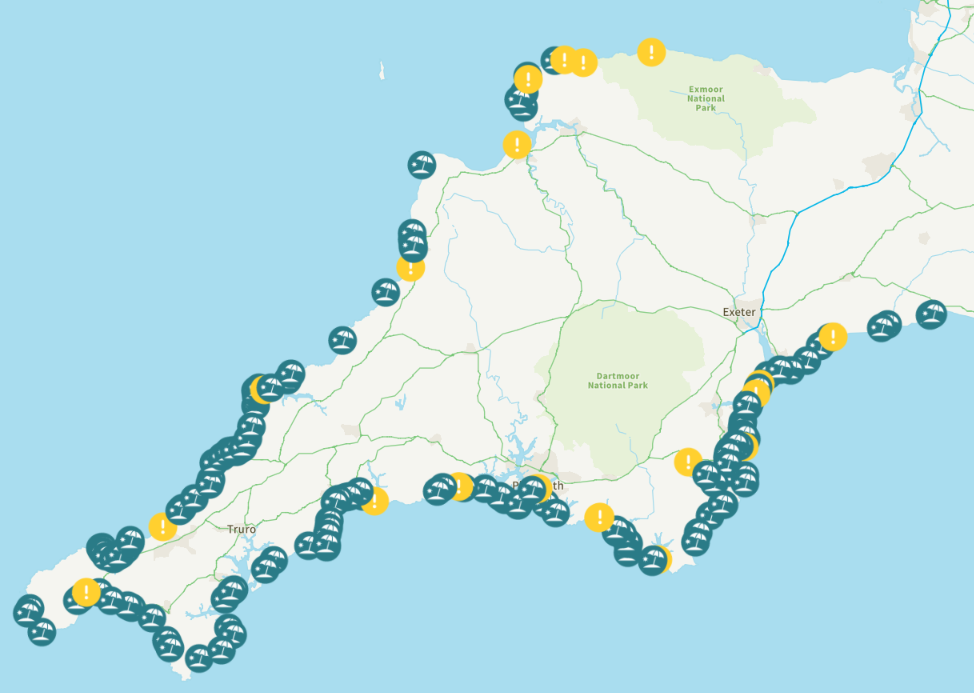
In our corner of Devon there have been multi-hour CSO activations at Woolacombe, Ilfracombe and Lynmouth, plus our nearest surfing beach at Widemouth Bay in North Cornwall:
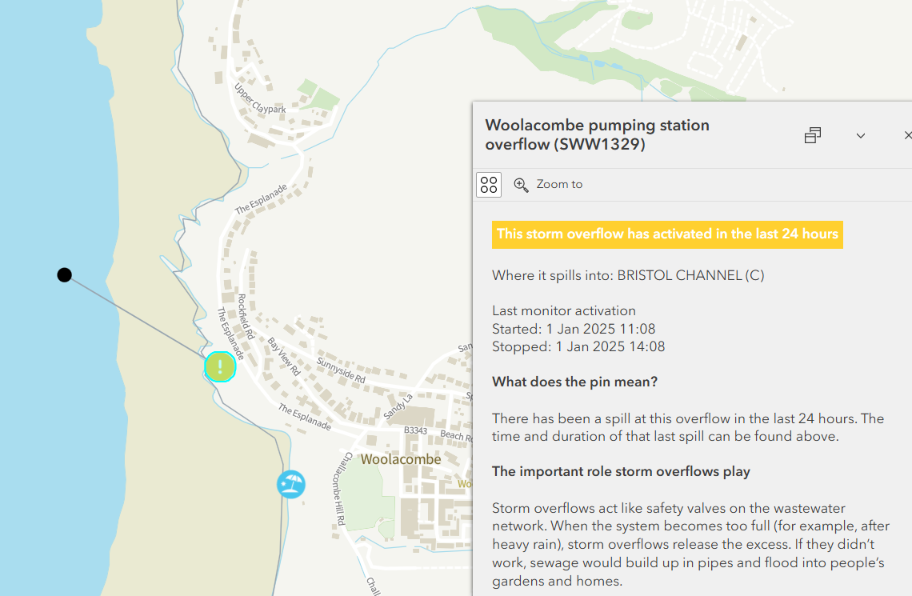
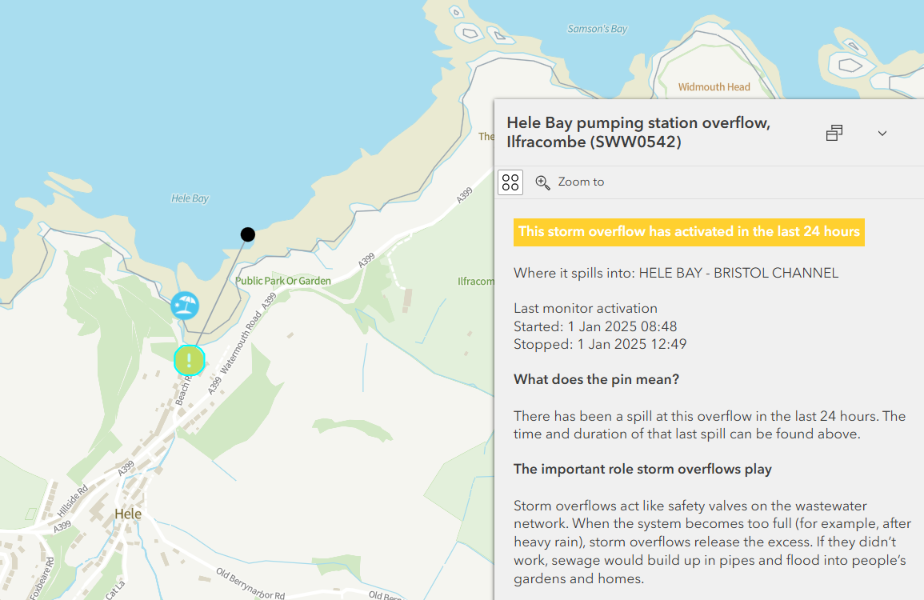
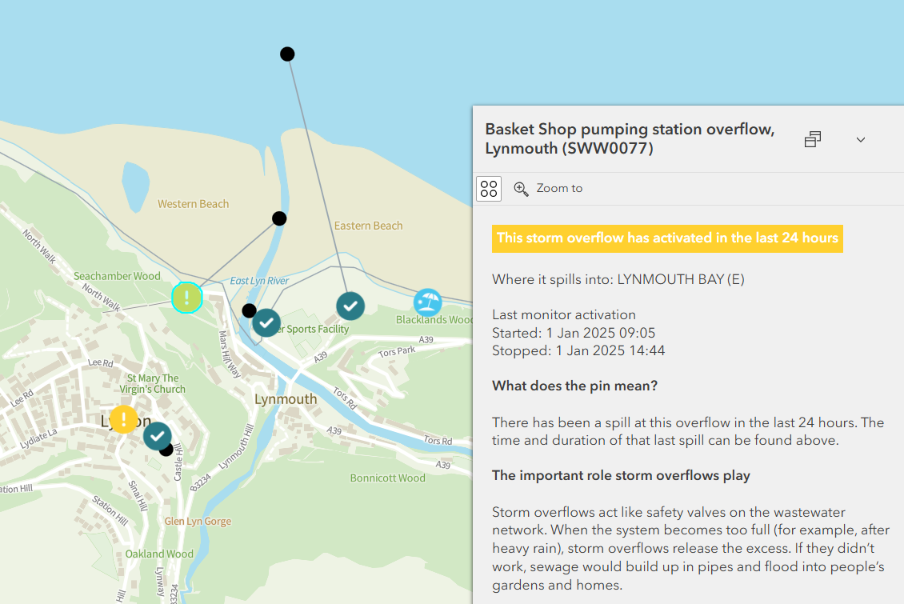
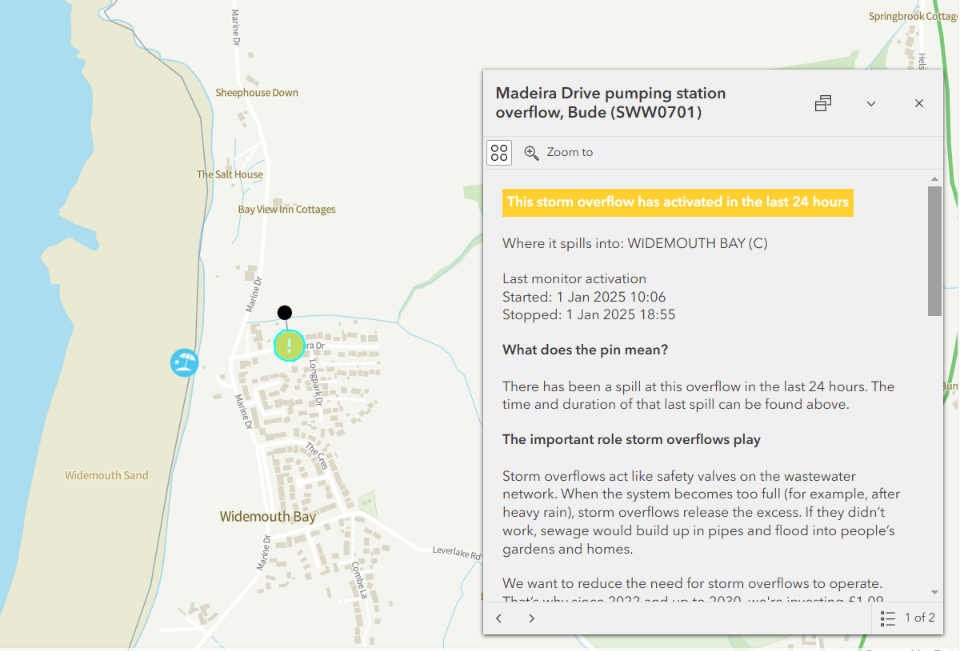
Before we get on to the large number of sewage pollution incidents around the coast of Devon and Cornwall at the beginning of December, we have an announcement to make.The…
After a long dry spell it has started raining once again in South West England. This evening South West Water's WaterFit Live map of combined sewer overflow activations looks like…
South West Water's WaterFit Live map of combined sewer overflow (CSO for short) activations currently only contains a couple of offline event duration monitors (EDM for short) at Totnes and…
There have been a few dry days to begin the month of July, but that has now changed. Here how South West Water’s “WaterFit Live” map looks this afternoon. Note the new format:
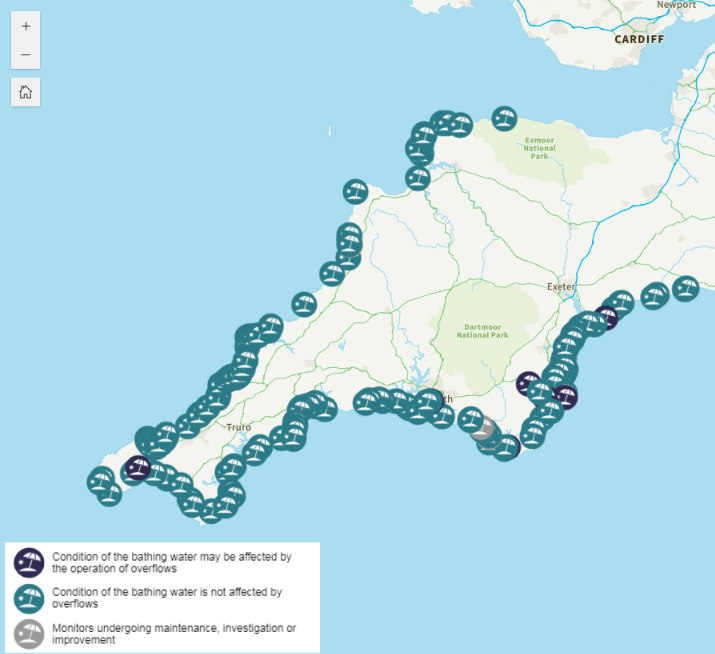
On the south coast of Devon there’s an ongoing sewage pollution incident in Plymouth, and others earlier in the day at Dawlish and Budleigh Salterton:
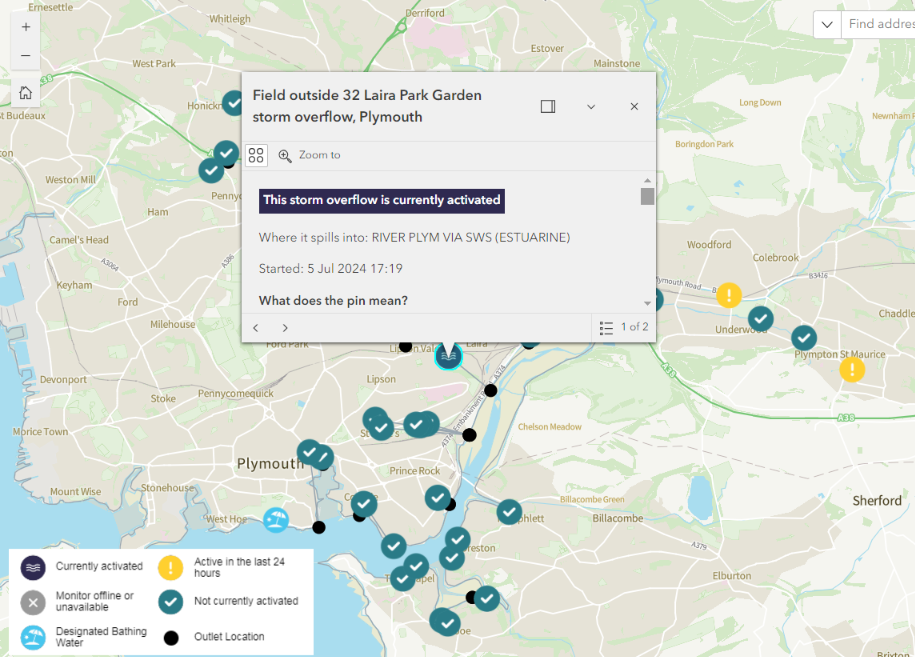
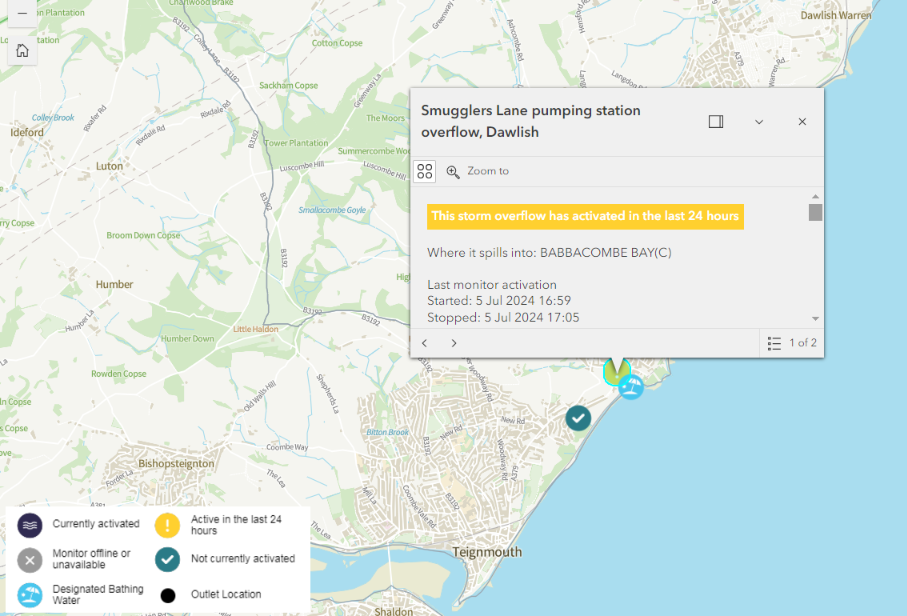
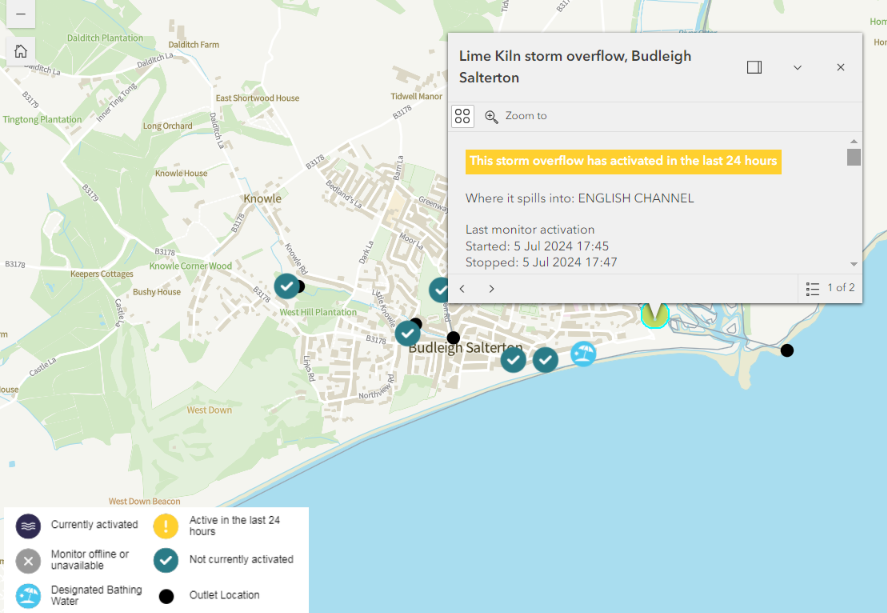
Here is this morning’s WaterFit Live map:
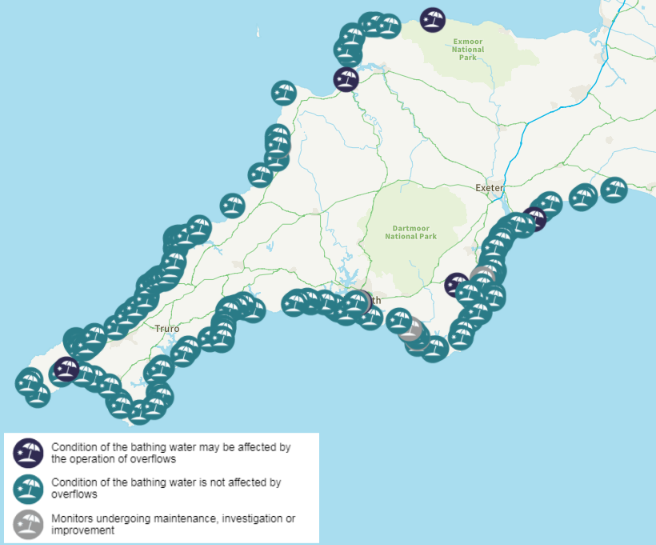
There's been a few dryish days recently. Consequently you might expect South West Water's WaterFit Live map to be free of sewage pollution indications. However, sadly that is not the…